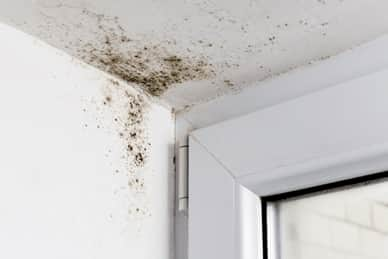New Course: Danger in the Damp--Dealing with Mold
Published on February 21, 2019 by Nick Walsh

Architects Training Institute's new course is called Danger in the Damp—Dealing with Mold. It will examine the design and construction methods of systems designed to withstand water penetration. It will start with an understanding of these systems and finding the source of intrusion then repairing and prevention.
This course teaches the following specific knowledge and skills:
- Terminology used to discuss how entrapped water creates problems for building users
- Measures to retard the infiltration of moisture into built environments
- Where and why mold growth occurs
- Testing and inspection to find water damage
- Systems and procedures to inventory moisture damage following intrusion
- Immediate and secondary actions steps to take following water intrusion
- Indoor air quality issues and how to identify them
- How to deal with mold growth, once it is discovered
Here is a course excerpt on the ways to reduce the chance of water intrusion:
There are straightforward steps that can be taken to reduce the chance of water intrusion. Specifying and using building materials that neither accept nor hold moisture is one practical solution. For example, rigid insulation will not hold moisture, whereas cellulose insulation will absorb the same. Metal siding will repel water, but wood siding becomes saturated unless protected. Single ply membrane roofing offers no lapped joints wherein moisture can reside, but that is not true of asphalt shingle roofing. Sandwich panels containing insulation faced with steel or aluminum sheeting are another prime example of materials which by their nature, repel moisture.
Construction detailing using forethought before construction begins can deny water entry. It is primarily based on a good imagination and an understanding of water behavior. Since precipitation tends to flow downhill, flashings below copings, below windows, above door and window openings and above breaks in the continuity of the building envelope where water should lap down over the next shield in the water barrier, will keep water from entering. If wind striking a building face has the potential to drive water up under flashing, then caulking should be specified, or other barriers put in place to prevent that. Capillary breaks can prevent water from bridging gaps. If there is a cavity into which moisture can enter and collect, weep holes should be provided to let that collected water drain from that cavity, back to the exterior. The devil is in the details, but unwanted moisture intrusion can be in the lack of them.
The above-mentioned material specification and detailing decisions should be choices made during the design process. The idea is to create a continuous envelope of materials that repel water and will not allow moisture to get through them and into the interior.
Another useful tool is ongoing efforts to find and eliminate any newly created gaps in the envelope through which moisture can get inside. Inspection during construction is the best time to do this, but it is also part of ongoing maintenance efforts. Indoor sources of moisture (other than the breath of inhabitants) can be found and fixed or eliminated. Uncontrolled air movement that pulls humid air in from the exterior can be controlled with airlocks or other known design devices.
Moisture Protection Resources
Building Elements React To Moisture As Artful Inspiration
